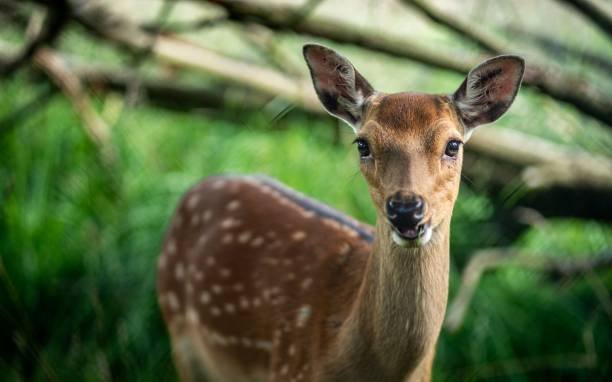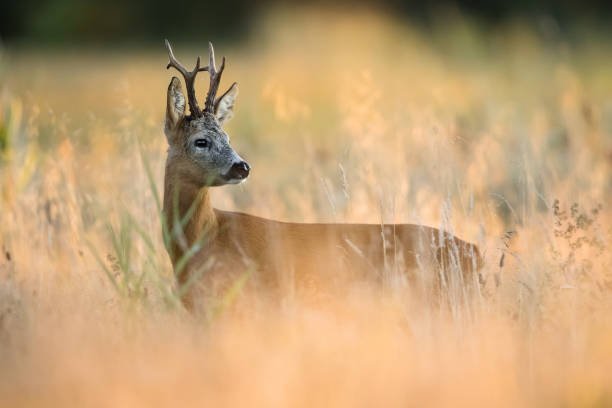What are the potential risks and challenges in deer rescue operations?

Introduction:
In this article, we delve into the critical realm of deer rescue operations, focusing on the often-overlooked aspects of risks and challenges. While the compassionate act of rescuing deer is fundamental to wildlife conservation, it is not without its complexities. Understanding and mitigating potential risks are paramount to the success of these operations.
Dear, when distressed or injured, can pose unique challenges to rescuers, requiring delicate handling and specialized care. Environmental factors, including terrain and weather, further complicate these missions. Additionally, human-wildlife conflict and legal considerations add layers of complexity. Exploring these challenges comprehensively is vital, offering insights to wildlife enthusiasts, conservationists, and rescue teams alike, and fostering a deeper understanding of the multifaceted nature of deer rescue operations.
Wildlife Handling and Safety Protocols:
Effective wildlife handling and adherence to safety protocols are paramount in deer rescue operations. Deer, especially when distressed, can exhibit unpredictable behavior. Proper training for rescue teams is vital, emphasizing the significance of understanding deer behavior and employing appropriate handling techniques. This involves minimizing stress on the animal while ensuring the safety of both rescuers and the deer. Safe capture methods, such as using nets or sedation by trained veterinarians, are crucial to prevent injuries to both the animal and the rescuers.
Moreover, protocols for the handling of injured or orphaned fawns differ significantly from adult deer. Fawns require delicate handling to avoid stress-induced health complications. Establishing clear guidelines for different age groups ensures the correct approach during rescue efforts, minimizing the risk of further harm.
Environmental Factors:
The terrain and weather pose substantial challenges in deer rescue operations. Deer are highly adaptable but can find themselves in precarious situations such as steep cliffs, icy ponds, or dense forests where rescue efforts are complicated. In such cases, specialized equipment like rescue harnesses, ropes, and even drones are utilized to navigate difficult terrains.
Weather conditions further exacerbate challenges. Rescues during extreme heat or cold demand swift action due to the risk of heatstroke or hypothermia. Additionally, rain or snow can impede visibility and make terrain slippery, making rescue operations hazardous for both the rescuers and the deer. Proper planning, suitable equipment, and a keen understanding of environmental risks are vital to overcoming these challenges.
Human-Wildlife Conflict and Safety Concerns:
Human-wildlife conflict presents a significant challenge in deer rescue operations. In urban areas, deer might venture into residential neighborhoods, leading to potential conflicts with humans and domestic animals. In such situations, managing the safety of both the residents and the deer becomes paramount. Public awareness campaigns can help educate communities about deer behavior and the importance of allowing professionals to handle rescue situations.
Moreover, there are safety concerns related to wildlife rescuers themselves. Deer, when cornered or feeling threatened, can become aggressive. Ensuring the safety of the rescue team involves employing protective gear and maintaining a safe distance. Additionally, awareness of zoonotic diseases (diseases transferable from animals to humans) is vital. Proper hygiene practices and, when necessary, vaccinations, are essential to minimize the risk of disease transmission during rescue operations. Collaborating with local authorities and wildlife experts helps in devising strategies to handle human-wildlife conflicts safely and efficiently.
By addressing these challenges through rigorous training, strategic planning, and collaboration, deer rescue operations can be conducted with maximum efficacy and safety for both the rescuers and the animals involved.
Legal and Ethical Considerations in Rescue Operations:
Legal and ethical considerations are central to deer rescue operations. Operating within the framework of wildlife protection laws is vital. Rescuers must obtain necessary permits and licenses, ensuring they have legal authority to handle and transport wildlife. Additionally, understanding and respecting local and national regulations regarding the rescue, rehabilitation, and release of deer is crucial. Ethically, it’s essential to prioritize the well-being of the animal above all else. This involves making decisions that align with the deer’s best interests, even if it means making difficult choices, such as determining if rehabilitation is possible or if euthanasia is the most humane option for severely injured animals.
Disease Transmission and Health Risks:
Disease transmission poses a significant risk in deer rescue operations. Deer can carry various diseases, some of which are transmissible to humans and other animals. Handling deer without proper precautions can lead to zoonotic diseases spreading. Protocols such as wearing appropriate protective gear, regular sanitization, and quarantine procedures are essential to minimize these risks. Common diseases like chronic wasting disease (CWD) are of particular concern. Rescuers must be aware of the symptoms and transmission methods of such diseases to safeguard both the deer and themselves.
Health risks to the deer during rescue and rehabilitation are also critical. Stress from capture and transport can weaken their immune systems, making them susceptible to diseases. Careful handling, minimizing stress, and ensuring a calm environment are crucial. Furthermore, injuries sustained during the rescue operation, if not treated promptly and correctly, can lead to infections. Regular veterinary checks and proper wound management are essential to mitigate these health risks.
Rehabilitation and Release Challenges:
Rehabilitation and release challenges encompass a range of complexities. One of the primary challenges is ensuring that the rescued deer can reintegrate successfully into the wild. Rehabilitation involves not only physical healing but also behavioral and social acclimatization. Young deer, especially, need to learn survival skills from their mothers, and if orphaned, this knowledge must be provided in captivity. Ensuring that the deer do not become habituated to humans is crucial. Excessive human interaction can make them reliant on humans, reducing their chances of survival in the wild.
The release itself presents challenges. Selecting an appropriate release site, where there is minimal risk of human-wildlife conflict and sufficient natural resources, is essential. Additionally, monitoring post-release behavior is vital. Some deer might struggle to adapt, requiring ongoing support. Others might integrate seamlessly but still need periodic monitoring to ensure their long-term survival. Collaboration with ecologists and wildlife behavior experts aids in designing effective rehabilitation and release programs, promoting the successful reintegration of rescued deer into their natural habitats.
By navigating these legal, ethical, disease-related, and rehabilitation challenges with expertise and care, deer rescue operations can safeguard both the animals and the ecosystems they inhabit. Proper planning, adherence to regulations, and ongoing education are the keys to addressing these complexities effectively.
Conclusion:
I hope this exploration of the risks and challenges in deer rescue operations has shed light on the intricate nature of wildlife conservation efforts. Addressing legal, ethical, and disease-related concerns is vital to ensuring the safety of both rescuers and the deer. The complexities of rehabilitation and release underline the importance of meticulous planning and ongoing monitoring.
As we navigate these challenges, it is essential to remember that our actions have a profound impact not only on individual deer but also on the delicate balance of our ecosystems. By approaching rescue operations with knowledge, compassion, and a deep respect for both the laws of nature and the laws of our society, we can contribute significantly to the well-being of these majestic creatures and the preservation of their natural habitats.










Post Comment